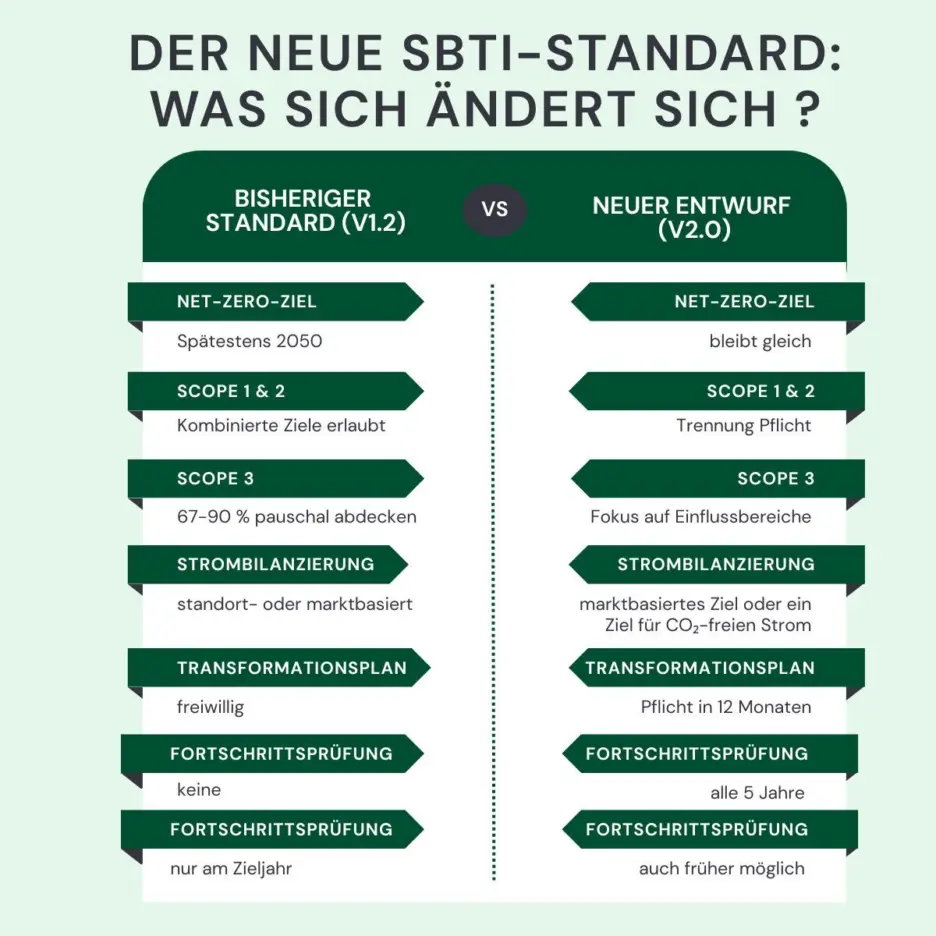
PCF (Product Carbon Footprint)
CO₂ balancing of your products
The product carbon footprint shows the CO₂ emissions caused by an individual product.

The Science Based Targets initiative (SBTi) is revising its Net-Zero standard. The new version 2.0 is currently published as a draft and contains many changes. But what is really new and what has changed compared to the current version? We show what companies need to consider in the future.
The requirements for climate targets have increased. More and more companies are setting themselves net-zero targets. But it often remains unclear: how serious are they? Is the focus really on reducing emissions or just on offsetting them? The SBTi would like to see more commitment, better traceability and real impact. That is the reason for version 2.0:
Some basic principles still apply:
We have summarized the most important changes for you according to the currently published draft:
Companies must now show how they intend to achieve their targets. Specifically: technologies, measures, timetables. These plans must be published within 12 months of the target being set.
Example: A manufacturer wants to become climate-neutral by 2040. It must now disclose how it is converting production processes, integrating suppliers and investing in green technologies.
Previously, the target was only reviewed once. Now it must be shown every five years whether the company is on the right track. Those who fail to do so will lose the award.
Previously, at least 67% or 90% of Scope 3 emissions had to be recorded across the board, depending on the target. This is known as "blanket coverage" because you had to cover a fixed percentage of all Scope 3 emissions - regardless of whether you had a direct impact on them or not.
What's new is that it now depends on where the company actually has an impact. Instead of a fixed percentage, the focus is on the largest sources of emissions and the areas where a company can make concrete changes - e.g. with its most important suppliers.
Example: A fashion company no longer has to record the emissions caused by the washing of clothing by customers, but it does have to record those caused by fabric production at its suppliers. New target types are also permitted, e.g. what percentage of purchases are made from Net Zero-compliant suppliers or how the emissions intensity of individual product lines develops.
This makes accounting more practical - especially for industries with complex supply chains.
Companies are no longer allowed to combine both areas. Separate targets must be set for direct emissions (Scope 1), such as the vehicle fleet, and indirect grid-bound emissions (Scope 2), such as electricity consumption.
In addition, electricity emissions must be taken into account according to both the location and the market approach. Guarantees of origin are only taken into account if they demonstrably contribute to the reduction.
Companies must continue to neutralize residual emissions. What is new is that they can assume responsibility for this even before reaching the net zero target year. Three models are under discussion:
We have summarized the most important differences for you:

Conclusion: The new version of the SBTi standard makes many things clearer and more binding. Whoever says Net-Zero must also implement it. For companies, this means: more transparency, more responsibility, but also more clarity. Those who act early can secure a competitive advantage.